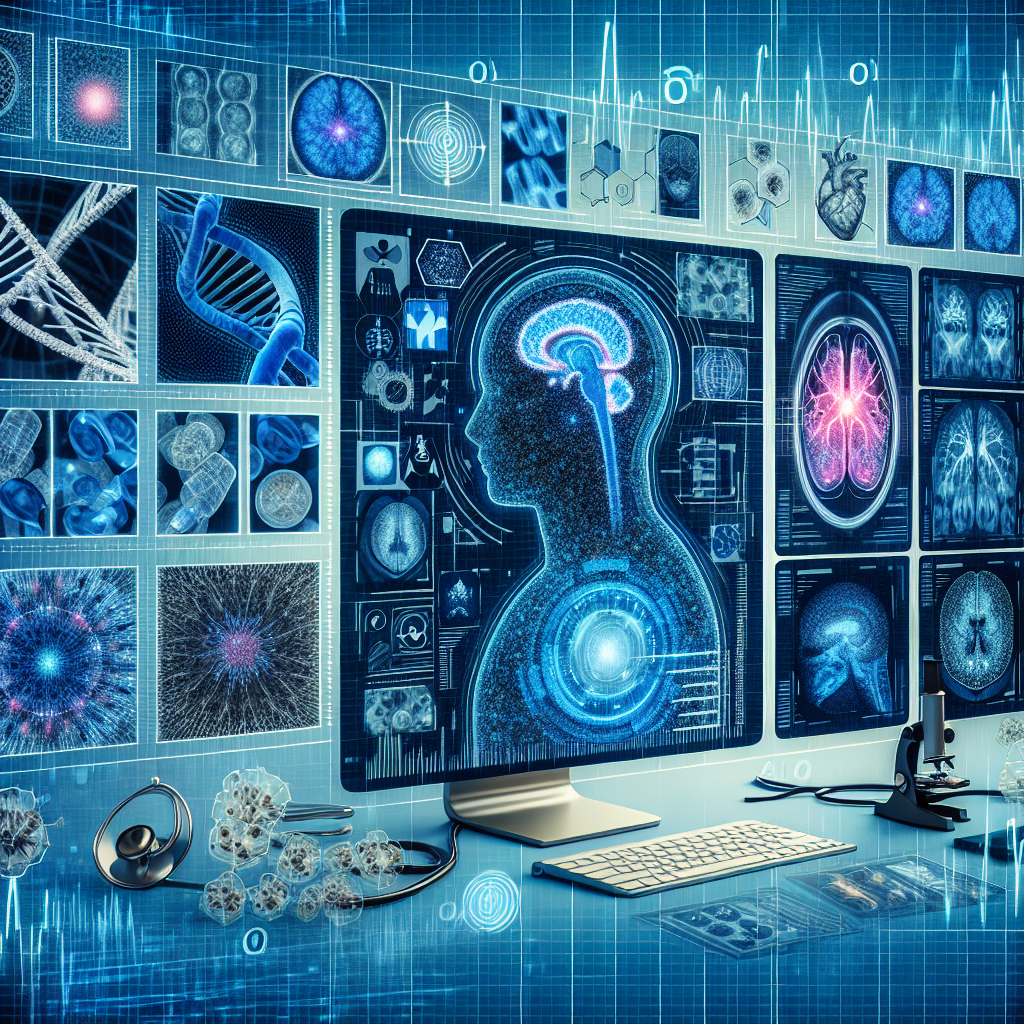Generative AI in Medical Imaging: Enhancing Diagnosis Accuracy
Medical imaging plays a crucial role in the diagnosis and treatment of various diseases and conditions. From X-rays and MRIs to ultrasounds and CT scans, these imaging techniques provide healthcare professionals with valuable insights into a patient’s health. However, interpreting medical images can be challenging, as it requires a high level of expertise and experience.
Generative AI, a subset of artificial intelligence that focuses on creating new data from existing data, has the potential to revolutionize medical imaging. By leveraging machine learning algorithms, generative AI can enhance the accuracy and efficiency of diagnosis, ultimately improving patient outcomes.
How Generative AI Works in Medical Imaging
Generative AI works by analyzing large amounts of medical imaging data to learn patterns and relationships within the data. This allows the AI system to generate new images that are similar to the ones it has been trained on. In the context of medical imaging, generative AI can be used to enhance the quality of images, fill in missing data, and even predict future outcomes based on current images.
One of the key advantages of generative AI in medical imaging is its ability to generate synthetic images that can supplement real patient data. For example, if a patient’s MRI scan is incomplete or of poor quality, generative AI can fill in the missing information to provide a more complete picture for diagnosis. This can be particularly useful in cases where patients are unable to undergo certain imaging procedures due to medical conditions or other limitations.
Generative AI can also be used to enhance the resolution and quality of medical images. By analyzing patterns in low-resolution images and generating high-resolution versions, AI algorithms can help healthcare professionals make more accurate diagnoses and treatment decisions. This can be especially beneficial in cases where subtle details in an image are crucial for diagnosis, such as detecting early signs of cancer or other diseases.
In addition to enhancing the quality of images, generative AI can also be used to predict disease progression and treatment outcomes. By analyzing a patient’s medical imaging data over time, AI algorithms can generate predictive models that can help healthcare professionals anticipate how a disease may progress and how different treatment options may affect the patient’s health. This can enable more personalized and effective treatment plans, ultimately leading to better patient outcomes.
Benefits of Generative AI in Medical Imaging
There are several key benefits of using generative AI in medical imaging:
1. Improved Diagnosis Accuracy: By enhancing the quality and resolution of medical images, generative AI can help healthcare professionals make more accurate diagnoses. This can lead to earlier detection of diseases and more effective treatment plans.
2. Enhanced Patient Care: Generative AI can help healthcare professionals provide more personalized and targeted care to patients by predicting disease progression and treatment outcomes. This can result in better outcomes and improved patient satisfaction.
3. Cost Savings: By reducing the need for repeat imaging procedures and enabling more efficient diagnosis and treatment planning, generative AI can help healthcare organizations save costs and resources.
4. Access to Care: Generative AI can help bridge the gap in healthcare disparities by providing access to quality medical imaging services in underserved areas or remote locations.
FAQs about Generative AI in Medical Imaging
Q: How is generative AI different from traditional AI in medical imaging?
A: Traditional AI in medical imaging typically relies on supervised learning algorithms to analyze and interpret images. Generative AI, on the other hand, focuses on creating new data from existing data using unsupervised learning algorithms. This allows generative AI to generate synthetic images and predict future outcomes based on patterns in the data.
Q: Is generative AI safe and reliable for use in medical imaging?
A: Generative AI has shown promising results in enhancing the accuracy and efficiency of medical imaging. However, like any technology, it is important to validate the AI algorithms and ensure that they are accurate and reliable before implementing them in clinical practice. Healthcare professionals should also exercise caution and use generative AI as a tool to support their decision-making process, rather than relying solely on AI-generated results.
Q: How can healthcare organizations implement generative AI in medical imaging?
A: Healthcare organizations can collaborate with AI developers and researchers to implement generative AI in medical imaging. This may involve training AI algorithms on large datasets of medical images, validating the algorithms through clinical trials, and integrating the AI technology into existing imaging systems. Healthcare professionals should also undergo training to understand how to use generative AI effectively and interpret the results accurately.
Q: What are the ethical considerations of using generative AI in medical imaging?
A: Ethical considerations of using generative AI in medical imaging include patient privacy, data security, and bias in AI algorithms. Healthcare organizations should ensure patient data is protected and secure when using AI technology. They should also be aware of potential biases in AI algorithms that may affect the accuracy and fairness of diagnosis and treatment decisions. Transparency and accountability in AI development and implementation are key to addressing these ethical concerns.
In conclusion, generative AI has the potential to revolutionize medical imaging by enhancing diagnosis accuracy, improving patient care, and reducing costs. By leveraging machine learning algorithms to analyze and generate medical images, generative AI can provide healthcare professionals with valuable insights and predictive models for more personalized and effective treatment plans. While there are challenges and ethical considerations to consider, the benefits of using generative AI in medical imaging are significant and hold great promise for the future of healthcare.

